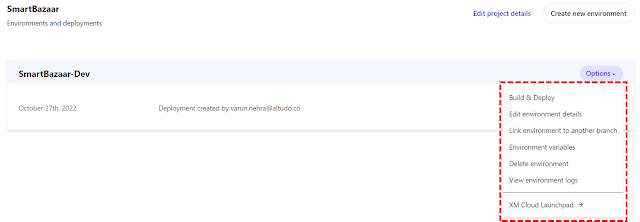Which e-commerce architecture is best for you?
There was a great report from Gartner a while back that summarized e-commerce architectures into three categories:
- Commerce-led architecture
- Experience-led architecture
- API-led architecture
Following which, Rob Earlam wrote a great summary of Sitecore Experience Commerce's experience-led architecture.
Looking back at my e-commerce experience, I would like to propose a possible fourth one, which is Hybrid Architecture.
Now, before I get into the Hybrid architecture. Let me quickly summarize these three architecture types.
Commerce-led Architecture
The idea here is simple, self-contained commerce solution, often times a monolith, where each every commerce feature is tightly coupled. The advantage in this case is in quickly deriving ROI from the system by shortening the time to market. However, there are several disadvantages to this approach such as single point of failure, lack of scalability options, high cost of maintenance etc.
Experience-led Architecture
This is the world of digital experience platforms that offer e-commerce solutions. Case and point Sitecore Experience Commerce. The idea is to leverage tenets of digital experience management in order to create a more relevant e-commerce experience that seems very organic, right from the first touch point, to lead generation, to conversion. The benefits here a huge as you are able to align with customer expectations from the get go. This works great for both B2C and B2B solutions. This architecture isn't necessarily a monolith but the digital experience platform acts as an intersection for all other platforms supporting the digital e-commerce experience such as CRM, Marketing Automation, ERP systems etc.
API-led Architecture
Enter the world of modern e-commerce solutions. Most mature and robust e-commerce solutions these days are based on APIs. This architecture can be very modular, case and point microservices based e-commerce solutions. The architecture here is very scalable, manageable and also offers quick time to market. In the world of SaaS, this is a natural contender. For those who wish to get down to business and are simply focused on high performing commerce solution for customers, this is the go-to architecture. I will do a deep dive into microservices architecture in a separate post.
Now, coming to our Hybrid Architecture.
Hybrid Architecture
Let's consider a API-led but experience driven architecture. What does this mean? This combines the best in breed API-led, microservices architecture for commerce solutions coupled with a robust digital experience manage platform such as Sitecore XP, to deliver a best in class commerce solution that leverages the power of personalized digital customer experience.
Sitecore in a way is already on it's way to offering this architecture through the introduction of Sitecore Host and plugin based architecture. Moving away from a monolithic approach, the idea is to modularize every feature of digital experience management and e-commerce and couple them in such a way that adds value to business.
Let's take the following scenario:
Say an enterprise is looking into embark on a digital transformation program with the following goals:
- Deliver cutting edge personalized omni-channel digital experience
- Introduce non-transactional e-commerce as a stepping stone to fully transactions e-commerce solution
There are multiple platforms that can achieve these goals individually. The trick is to invest in an architecture and a platform that offers the following:
- Quick time to market
- Scalablity to accommodate for growth
- Low cost of operation and total cost of ownership
In the hybrid architecture approach, microservices based e-commerce coupled with a robust digital experience management platform can check all these boxes.
Going back to the scenario, Sitecore XP is a great choice for delivering personalized omni-channel digital experience.
Now, for a simple, non-transactional e-commerce solution, assume you have the following:
- A simple catalog of products
- Cart management
- Simple payment-less checkout (free checkout)
When you try to connect these two, digital platform with e-commerce solution, the outcome is even more powerful as you can moving from a traditional commerce offering to a relationship based commerce solution. You can now do things like:
- Offer omni-channel authentication as a service
- Offer cart as a service
- Manage lead-generation
- Conduct campaign attribution against conversion
The pendulum seems to be swinging away from off-the-shelf and more towards bespoke digital experiences and whether you build a e-commerce solution ground up or rely on a microservices based platform such as Sitecore will be a key deciding factor to consider.
Please do leave questions, comments or suggestions.
Gartner: The Three Approaches to Digital Commerce Platform Architecture and How to Choose Among Them, Mike Lowndes


Comments
Post a Comment